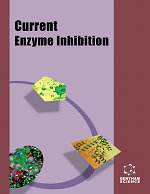
Full text loading...
We use cookies to track usage and preferences.I Understand
The present study examines the potential effect of Calendula monardii (Boiss. & Reut.) on inhibiting various enzymes involved in many diseases.
Calendula suffruticosa subsp. monardii (Boiss. & Reut.) Ohle, a medicinal plant from the Mediterranean region and, more precisely, from the extreme northeast of Algeria, is characterized by its wide use in the traditional medicine of the local population. This is what prompted us to investigate some pharmacological benefits such as anti-diabetes and Alzheimer's activities, in addition to anti-oxidant activity.
The effects of extraction methods and solvents on the amount of phenolic profiles and the biological activity of the different parts of this plant were studied, where the aim was to obtain a high extraction yield of bioactive compounds and consequently high biological activities.
In vitro standard procedures were used to assess enzyme inhibitory activity (AChE, BChE, α-Amylase and α-Glucosidase) of Calendula monadii, and the antioxidant activity was assessed using the DPPH, ABTS, CUPRAC, Reducing power and Ferrous ions assays.
When using ultrasound, a significant increase in the amounts of (TPC, TFC and TFlas) and antioxidant activity (DPPH, ABTS, CUPRAC, Reducing power and Ferrous ions cheating assay) in addition to the inhibitory activity of enzymes (AChE, BChE, α-Amylase α-Glucosidase) was found, compared to the results of conventional extraction. Furthermore, the aqueous solvent of ethanol 70% is the very effective solvent for extraction compared to methanol 70% aqueous solvent.
Based on these results, it can be said that this plant contains important biological activities, so it can be used in phytotherapy.

Article metrics loading...

Full text loading...
References


Data & Media loading...

